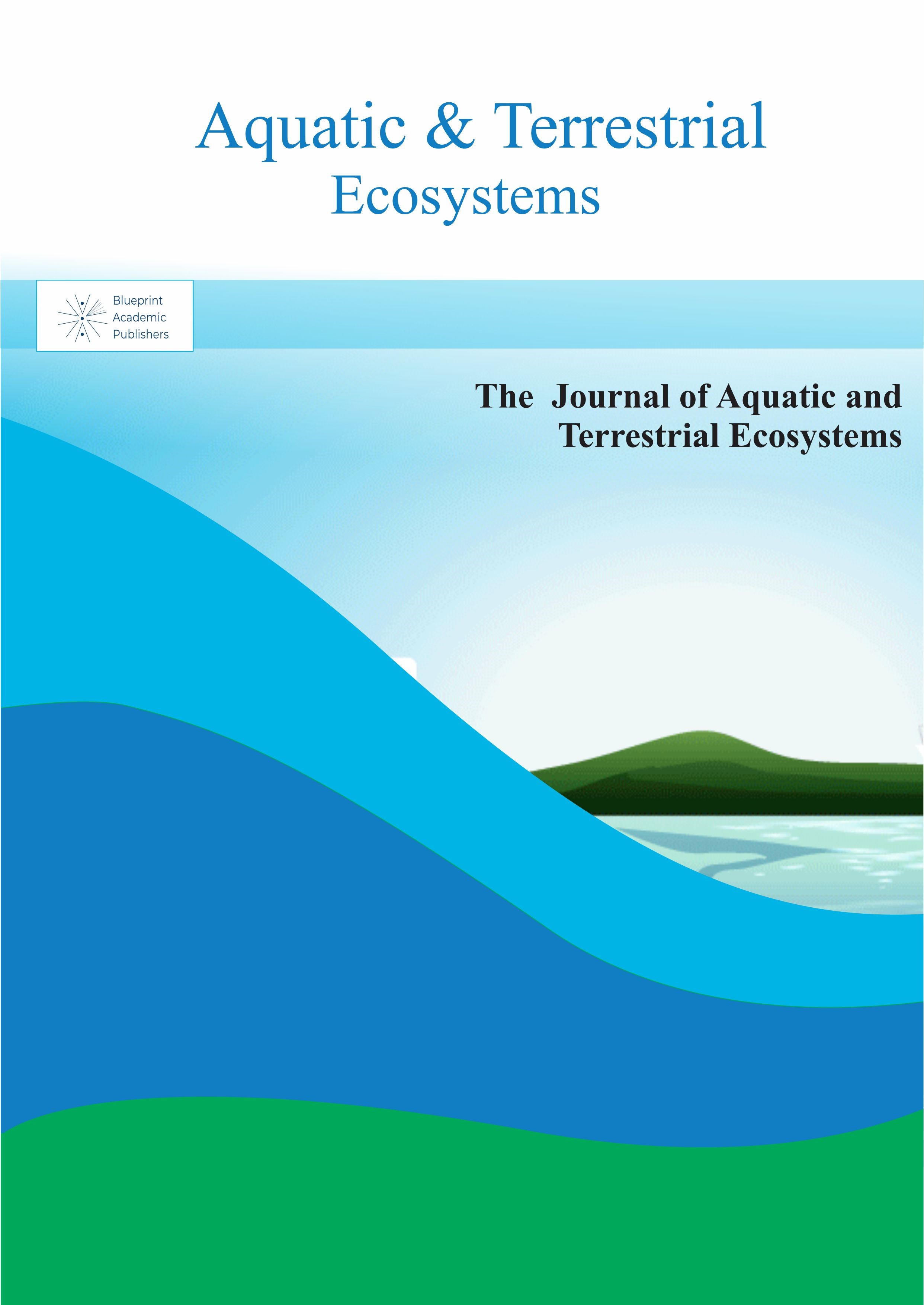Influence of pH Variation on Lead Uptake and Accumulation in Raphanus raphanistrum and Brassica napus Grown in Spiked and Limed Agricultural Soils of Moiben Sub-County, Kenya
Main Article Content
Keywords
Lead uptake, bioaccumulation factor, soil amendment, phytoremediation
Abstract
This study assessed Pb uptake and distribution in Raphanus raphanistrum (RR) and Brassica napus (BN) grown in agricultural soils from Moiben Sub-County, Kenya, under three soil treatments: Pb-spiked soil (to ≈1000 mg/kg), non-spiked soil, and spiked soil amended with lime (to achieve pH≈7.4). Pb concentrations were quantified using Atomic Absorption Spectrophotometry (AAS), and the Bioaccumulation Factor (BAF) was calculated for roots, stems, leaves and seeds. Data were analyzed using SPSS v25. Descriptive statistics (means, standard deviations) were computed for Pb concentrations in soil and plant tissues. One-way ANOVA tested differences among treatments (control, spiked, limed), with Tukey’s HSD applied for post hoc comparisons. Results showed that Raphanus raphanistrum accumulated mean Pb concentrations of 1043.80 ± 18.34 mg/kg in spiked soils, 25.49 ± 0.39 mg/kg in non-spiked soils, and 548.24 ± 17.75 mg/kg in spiked and limed soils. Brassica napus followed a similar trend, with significantly higher Pb accumulation in spiked compared to non-spiked soils, while liming reduced uptake by nearly 50%. In both species, roots exhibited the highest BAF across treatments, while stems consistently recorded the lowest. In spiked soils, the accumulation trend was roots > seeds > leaves > stem, whereas in limed soils it shifted to roots > leaves > seeds > stem, with overall BAF values reduced to <1. Although liming effectively reduced Pb uptake, both Raphanus raphanistrum and Brassica napus accumulated Pb levels in edible parts above FAO/WHO permissible limits (0.3 mg/kg for leafy vegetables, 0.1 mg/kg for root/tuber crops, and 0.2 mg/kg for cereals and oilseeds), raising concerns over food safety. The findings highlight the influence of soil amendments on metal bioavailability and underscore the phytoremediation potential of RR and BN, particularly in Pb-contaminated soils.
References
Akenga, T., Kerich, E., Kiplagat, A., & Sudoi, V. (2020)b. Health risk assessment levels of selected heavy metals on solanum nigrum. Soils and Water Collected Along River Moiben, Uasin-Gishu County, Kenya.. Lupine Publishers — Chemistry & Material Science. https://lupinepublishers.com/chemistry-journal/fulltext/health-risk-assessment-levels-of-selected-heavy-metals-on-solanum-nigrum-soils-and-water-collected.ID.000197.php. (Lupine Publishers)
Ali, H., Khan, E., & Sajad, M. A. (2013). Phytoremediation of heavy metals—Concepts and applications. Chemosphere, 91(7), 869–881. https://doi.org/10.1016/j.chemosphere.2013.01.075
Bolan, N., Kunhikrishnan, A., Thangarajan, R., Kumpiene, J., Park, J., Makino, T., ... & Kirkham, M. B. (2014). Remediation of heavy metal(loid)s contaminated soils–to mobilize or to immobilize? Journal of Hazardous Materials, 266, 141–166. https://doi.org/10.1016/j.jhazmat.2013.12.018
Chandwani, S., Kayasth, R., Naik, H., & Amaresan, N. (2023). Current status and future prospect of managing lead (Pb) stress through microbes for sustainable agriculture. Environmental Monitoring and Assessment, 195(4), 479. https://doi.org/10.1007/s10661-023-11061-8
Choge, P., & Lutta, S. (2018). Assessment of levels of selected heavy metals in soil and vegetables from Kenyan markets. [PDF]. Kenya Chemical Society / Journal. https://kenyachemicalsociety.org/wp-content/uploads/2023/07/
Choge-P-Lutta-S-JKCS-11-1-2018-10-17-copy.pdf. (Kenya Chemical Society)
Chunilall, V., Kindness, A., & Jonnalagadda, S. B. (2005). Heavy metal uptake by two edible Amaranthus herbs grown on soils contaminated with lead, mercury, cadmium, and nickel. Journal of Environmental Science and Health, Part B, 40(3), 375–384. https://doi.org/10.1081/PFC-200045573
Grispen, V. M. J., et al. (2006). Phytoextraction with Brassica napus L.: A tool for cleaning contaminated soils. Science of the Total Environment. https://www.sciencedirect.com/science/article/abs/pii/S0269749106000352.
Gupta, D. K., Chatterjee, S., Datta, S., Veer, V., & Walther, C. (2014). Role of phosphate fertilizers in heavy metal uptake and detoxification of toxic metals. Chemosphere, 108, 134-144. https://doi.org/10.1016/j.chemosphere.2014.01.030
KNBS (Kenya National Bureau of Statistics). (2019). Kenya population and housing census. Nairobi, Kenya.
Kopittke, P. M., Blamey, F. P. C., Kopittke, R. A., Asher, C. J., & Menzies, N. W. (2010). Tolerance of seven perennial grasses to high nickel in sand culture. Environmental Chemistry, 7(3), 279-286. https://doi.org/10.1071/EN09100
Lanphear, B., Navas-Acien, A., & Bellinger, D. C. (2024). Lead poisoning. New England Journal of Medicine, 391(17), 1621-1631.
Pourrut, B., Shahid, M., Dumat, C., Winterton, P., & Pinelli, E. (2011). Lead uptake, toxicity, and detoxification in plants. Reviews of Environmental Contamination and Toxicology, 213, 113–136. https://doi.org/10.1007/978-1-4419-9860-6_4
Sharma, P., & Dubey, R. S. (2005). Lead toxicity in plants. Brazilian Journal of Plant Physiology, 17(1), 35–52. https://www.scielo.br/j/bjpp/a/7yTrYC5ScbBVXZrwMSvVHFg/?lang=en
Sherif, S. S., Simiyu, G. M., & Kinyua, M. G. (2024). Phytoremediation of Chromium and Lead-Contaminated Soil Using Putative Raphanus raphanistrum. AJEST. https://ajest.org/index.php/ajest/article/view/1
WHO (World Health Organization). (2021). Lead poisoning and health. Retrieved from https://www.who.int/news-room/fact-sheets/detail/lead-poisoning-and-health
World Health Organization. (2024, September 27). Lead poisoning and health — Fact sheet. https://www.who.int/news-room/fact-sheets/detail/lead-poisoning-and-health. (World Health Organization)
Wuana, R. A., & Okieimen, F. E. (2011). Heavy metals in contaminated soils: a review of sources, chemistry, risks and best available strategies for remediation. International Scholarly Research Notices, 2011(1), 402647.
Yoon, J., Cao, X., Zhou, Q., & Ma, L. Q. (2006). Accumulation of Pb, Cu, and Zn in native plants growing on a contaminated Florida site. Science of the Total Environment, 368(2–3), 456–464. https://doi.org/10.1016/j.scitotenv.2006.01.016
Zeremski, T., et al. (2021). Brassica species in phytoextractions: Real potentials and limitations. Plants (MDPI). https://pmc.ncbi.nlm.nih.gov/articles/PMC8617981/
Zhang, Y., Zhang, H., Zhang, J., & Yang, J. (2020). Influence of soil pH on heavy metal availability and uptake by plants. Ecotoxicology and Environmental Safety, 192, 110242.
Zhou, H., Zhou, X., Zeng, M., Liao, B. H., Liu, L., Yang, W. T., ... & Wang, Y. J. (2014). Effects of combined amendments on heavy metal accumulation in rice (Oryza sativa L.) planted on contaminated paddy soil. Ecotoxicology and Environmental Safety, 101, 226-232. https://doi.org/10.1016/j.ecoenv.2014.01.001

